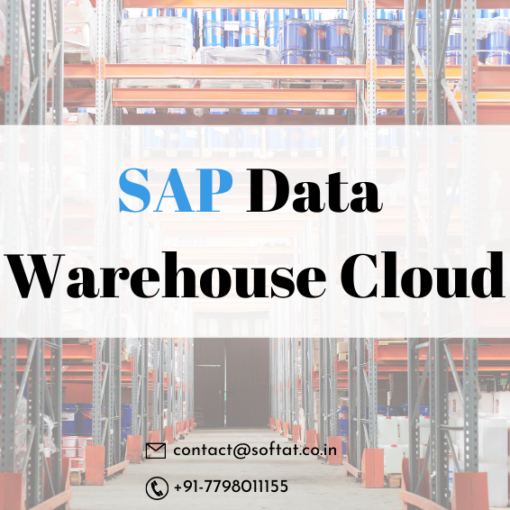Imagine your fingertips flying across the keyboard, composing the symphony of an ABAP program. Each line resonates with purpose, data flowing gracefully from source to destination. But then, a discordant note – a data format mismatch, a validation error, a chaotic breakdown in communication. Frustration stings as your masterpiece crumbles. Fear not, fellow coders! This guide is your tuning fork, harmonizing your code with the potent power of Data Elements in SAP ABAP. Unleash their precision, embrace their control, and transform your programs into flawless melodies of data integrity and efficiency. Here, you’ll unlock the secrets of Data Elements – their creation, usage, and best practices – to weave a code tapestry that sings with consistency and performs with unparalleled elegance. So, silence the frustration, tune your ABAP skills, and prepare to conduct your data masterpiece – your guide to conquering the world of Data Elements awaits!

Demystifying Data Elements: The Architects of Order in Your ABAP Symphony
Before crafting a masterful ABAP program, imagine meticulously selecting the bricks and mortar – the very building blocks of your digital edifice. Enter Data Elements, the unsung heroes behind your code’s precision and control. They’re not just glamorous data types; they’re the architects of order, ensuring every piece of information aligns flawlessly within your program.
Defining the Blueprint:
Think of Data Elements as detailed blueprints for individual data fields. They dictate the permissible types (integers, dates, currencies), establish lengths and formats, and define clear boundaries for acceptable values. Just like an architect wouldn’t allow mismatched window shapes or walls haphazardly built, Data Elements prevent chaos by dictating the precise parameters for each data point.
Beyond Numbers and Words:
But Data Elements are more than just data policemen. They can wield validation rules like magic wands, preventing erroneous inputs before they wreak havoc in your code. Imagine filtering a customer list by specific date ranges – Data Elements ensure such dates actually exist, saving you from frustrating error messages and unreliable results.
The Difference That Makes a Difference:
Now, you might be wondering, “Isn’t that what data types do?” While data types define broad categories (numbers, characters, dates), Data Elements add a layer of granular control. Think of them as specializing within a data type family. You might have a “date” data type, but a Data Element could specify “date of birth” with a specific format (DD/MM/YYYY) and range (past dates only). This precision is what separates the well-structured program from the one riddled with inconsistencies.
How SAP works in the Business?
From Blueprints to Symphony: Deep Dives into Data Element Mastery
The Power of Ranges:
Data Elements aren’t just sticklers for format; they can define the acceptable range of values for your data. Imagine creating a Data Element for “product quantity” – one wouldn’t want negative values or quantities exceeding inventory limits, right? Data Elements allow you to set these boundaries, preventing nonsensical entries and ensuring data integrity. Think of it as drawing a clear stage upon which your data gracefully performs, free from the jarring dissonance of invalid values.
Formats for Every Note:
Just like every instrument in an orchestra has its unique voice, every data point deserves its rightful format. Data Elements offer a palette of formatting options, like defining currency symbols, rounding decimals, or specifying date separators. This ensures data not only adheres to internal logic but also presents clearly and intuitively to users. Imagine displaying customer addresses – a Data Element for “street address” can guarantee consistent formatting, making it easier for both users and programs to navigate the information.
The Domain Connection:
Think of Data Elements as individual performers perfecting their parts, while Domains act as the unifying score sheet. A Domain is a reusable template for frequently used Data Element definitions, offering consistency and standardization across your program. Imagine crafting ten Data Elements for various price fields – using one “price” Domain eliminates redundant work and ensures all price fields share the same format, scale, and validation rules. Domains are the conductors, harmonizing your data’s performance with efficient reusability.
CRM Solutions Need a Brought together, Multi-contact Insight
Unveiling the Data Dictionary: Where Data Elements Find Their Home
Now that we’ve explored the individual musicians, let’s step into the grand concert hall – the SAP ABAP Dictionary (SE11). This is where Data Elements come to life, finding their place amongst a vibrant community of data objects. Think of it as a bustling library, shelves packed with meticulously organized blueprints for every type of data your ABAP program could ever dream of.
SE11: Your Navigation Maestro:
Imagine navigating a sprawling city without a map – data exploration without SE11 can feel just as disorienting. This powerful tool serves as your compass, allowing you to create, modify, and manage Data Elements with ease. Search for specific elements by name, browse through categories, or filter by domain – SE11 becomes your window into the intricate world of data definitions.
Relationship Symphony:
Data Elements don’t exist in isolation – they tango with other objects to create a harmonious flow of information. See those foreign keys in tables? They connect Data Elements across structures, creating bridges for data to waltz effortlessly between fields. This intricate web of relationships allows your program to leverage data from different sources, building complex functionalities with elegant efficiency.
Documentation: The Unsung Chorus:
Imagine listening to a beautiful melody without knowing its name or composer. Documentation plays a similar role for Data Elements – it tells their story, explaining their purpose, format, and validation rules. Think of it as the program notes accompanying your code, ensuring future you (or fellow developers) can readily understand the intent and logic behind each Data Element.
Crafting Your Masterpiece: Data Elements in Action
With the blueprints laid out and the stage set, it’s time to unleash the true power of Data Elements in your ABAP programs. Let’s dive into the practical realm, exploring how these versatile tools add precision, control, and elegance to your code.
Building the Foundation: Tables and Structures
Imagine tables as your data orchestra’s instrument cases, neatly housing each field like a well-rehearsed musician. Data Elements become the assigned instruments, dictating the type, format, and range for each piece of information. By assigning them to table fields, you ensure consistency and maintainability, preventing chaotic dissonance from corrupting your data’s performance.
Think of structures as temporary ensembles formed within your program. They group related Data Elements for specific tasks, like a customer address trio comprising “street address,” “city,” and “postal code.” These dynamic formations allow you to manipulate subsets of data efficiently, tailoring your code to handle specific scenarios with finesse.
Dynamic Data with TYPE-POOLS:
Now, imagine your program needing to adapt to an ever-changing musical score. TYPE-POOLS offer this flexibility, acting as libraries containing collections of Data Elements. You can dynamically assign these Data Elements to variables within your code, creating structures on the fly to handle unforeseen data complexities. This adaptable approach empowers your programs to handle data in diverse forms, ensuring they’re always in tune with the ever-evolving needs of your users.
Validation: The Unsung Guardians
Data Elements aren’t just pretty faces; they act as vigilant gatekeepers, enforcing validation rules that protect your program from erroneous input. Imagine a Data Element for “order quantity” – its validation rules can prevent negative values or quantities exceeding stock levels, ensuring only reliable data enters your program’s processing flow. This safeguards your code from crashes, malfunctions, and inaccurate results, keeping your data symphony playing harmonious melodies.
Beyond Fundamentals: Search Helps and Value Ranges
Data Elements offer even more tools to refine your program’s performance. Search helps act as helpful stagehands, guiding users through complex data selections with user-friendly interfaces. Imagine filtering a product list by price range – a Data Element’s value range simplifies this process, eliminating the need for manual entry and reducing the risk of errors. These features contribute to a smooth and intuitive user experience, making your program a joy to interact with.
O DATA Security and Authentication
The Symphony’s Crescendo: Mastering the Art of Data Element
We’ve explored the foundational notes of Data Elements, witnessed their magic in action, and now, it’s time to orchestrate an unforgettable crescendo. This final section delves into best practices and continuous learning, ensuring your data symphony resonates with excellence forever.
Tuning Your Code with Best Practices:
Imagine a conductor perfecting every nuance of a performance. Applying Data Element best practices is akin to this meticulous refinement. Naming conventions become your musical notations, ensuring each element has a clear and concise label, readily understood by fellow musicians (developers). Documentation acts as your program’s musical score, chronicling the purpose, format, and validation rules of each Data Element, guiding future coders through your masterpiece.
Think of comments as interpretive annotations, sprinkled throughout your code to explain specific details or complex logic. Imagine a tricky validation rule – a well-placed comment becomes the conductor’s whispered explanation, ensuring seamless understanding and smooth code execution. Remember, these best practices aren’t just stylistic flourishes; they contribute to clarity, maintainability, and ultimately, the enduring performance of your code.
Embracing the Ever-Evolving Score:
The world of data is a dynamic symphony, constantly evolving with new features and functionalities. To stay in tune, continuous learning becomes your lifelong pursuit. Imagine attending workshops like masterclasses, exploring online resources like training manuals, and engaging with fellow developers within vibrant communities. These are your opportunities to discover new instruments (tools and features), refine your technique (coding skills), and adapt to the ever-changing tempo of the data landscape.
Think of yourself as a conductor, forever learning new compositions (best practices), expanding your repertoire (knowledge base), and embracing the thrill of experimentation. Remember, the journey of mastering Data Elements is a continuous exploration, one that promises endless possibilities and ever-more impressive performances.
Now, as the final crescendo fades, let’s bask in the harmonious symphony you’ve crafted. We’ve delved into the fundamental essence of Data Elements, those meticulous architects of order within your ABAP code. You’ve explored their blueprints, witnessed their magic in tables and structures, and learned how to dynamically adapt them with TYPE-POOLS. Validation became your vigilant shield, ensuring data integrity, while search helps and value ranges smoothed the user’s journey. Finally, you embraced best practices as your score annotations, and continuous learning as your musical director, forever refining your craft.
Remember, mastering Data Elements isn’t about reaching a final note; it’s about embracing the endless possibilities they offer. So, dear coders, pick up your data baton, unleash your creativity, and compose your own masterpiece. Experiment, explore, and never stop learning – the world of ABAP development awaits your next data symphony. And as you conduct your digital orchestra, remember this final tip: always strive for clarity, consistency, and elegance, for those are the hallmarks of a true Data Element Maestro.
Farewell, fellow creators! May your code sing with precision, your data waltz with integrity, and your ABAP applications resonate with enduring brilliance. The stage is yours – go forth and orchestrate your data masterpiece!




